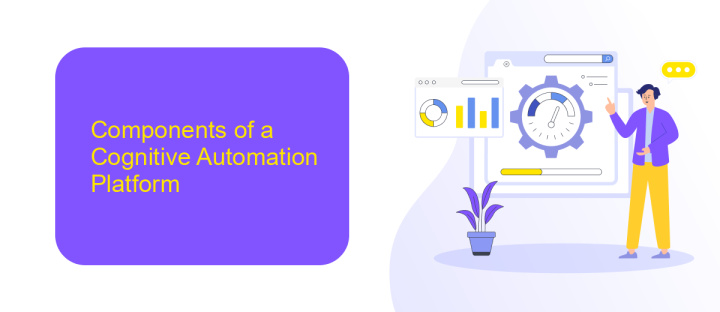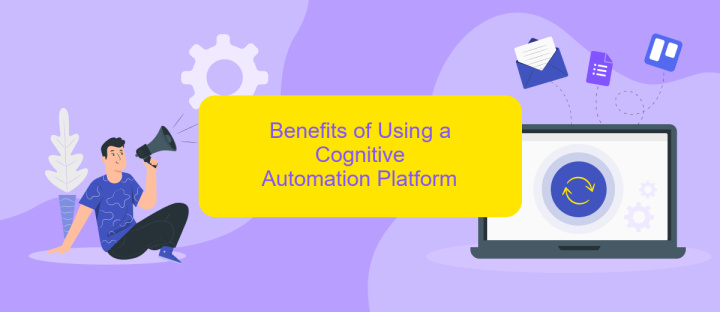Cognitive Automation Platform
Cognitive Automation Platforms represent a transformative leap in the realm of digital innovation, seamlessly integrating artificial intelligence and machine learning to streamline complex business processes. By mimicking human cognitive functions, these platforms enhance decision-making, reduce operational costs, and improve efficiency. As organizations strive for agility and competitiveness, embracing cognitive automation becomes essential, offering unprecedented opportunities for growth and innovation in an increasingly data-driven world.
Introduction
Cognitive Automation Platform represents a transformative approach in the realm of business processes, leveraging advanced technologies to enhance decision-making and operational efficiency. By integrating artificial intelligence, machine learning, and data analytics, this platform empowers organizations to automate complex tasks that traditionally required human intervention. The result is a streamlined workflow that not only reduces errors but also accelerates productivity.
- Automates repetitive and time-consuming tasks.
- Enhances decision-making with data-driven insights.
- Improves accuracy and reduces human error.
- Boosts productivity and operational efficiency.
- Facilitates seamless integration with existing systems.
The adoption of a Cognitive Automation Platform is becoming increasingly essential in today's competitive landscape. As businesses strive to innovate and stay ahead, this technology offers a strategic advantage by enabling more agile and responsive operations. By harnessing the power of cognitive automation, organizations can unlock new levels of performance, ensuring they remain adaptive and resilient in a rapidly changing environment.
Components of a Cognitive Automation Platform

A Cognitive Automation Platform is built upon several key components that work in harmony to streamline and enhance business processes. At its core, the platform integrates advanced machine learning algorithms and natural language processing to understand and execute complex tasks. These technologies enable the system to analyze vast amounts of data, recognize patterns, and make informed decisions with minimal human intervention. Additionally, cognitive automation platforms often incorporate computer vision to process visual information, further expanding their capabilities in areas such as quality control and security monitoring.
Integration is a vital component of any cognitive automation platform, ensuring seamless communication between various systems and applications. Tools like ApiX-Drive facilitate this by providing robust integration services that connect disparate software solutions, enabling data to flow effortlessly across platforms. This ensures that the cognitive automation system can access and utilize all necessary information to perform tasks efficiently. Moreover, the platform typically includes a user-friendly interface, allowing users to monitor processes, customize workflows, and gain insights through real-time analytics. These components collectively empower businesses to optimize operations, reduce errors, and drive innovation.
Benefits of Using a Cognitive Automation Platform

Cognitive Automation Platforms are revolutionizing the way businesses operate by enhancing efficiency and decision-making processes. These platforms integrate advanced technologies such as artificial intelligence and machine learning to automate complex tasks, allowing organizations to focus on strategic initiatives. By leveraging cognitive capabilities, businesses can process vast amounts of data in real-time, leading to more informed decisions and improved operational outcomes.
- Increased Efficiency: Automating routine tasks reduces manual effort, leading to faster and more accurate results.
- Enhanced Decision-Making: Access to real-time data analytics allows for more informed and timely business decisions.
- Cost Reduction: By minimizing human intervention, organizations can significantly cut operational costs.
- Scalability: Cognitive automation platforms can easily adapt to growing business needs, ensuring sustainable growth.
- Improved Customer Experience: Automation enables personalized and faster customer interactions, enhancing satisfaction and loyalty.
Incorporating a Cognitive Automation Platform into business operations not only streamlines processes but also fosters innovation. By freeing up human resources from mundane tasks, companies can channel creativity into developing new products and services. This strategic advantage positions businesses to stay competitive in a rapidly evolving market landscape, ensuring long-term success and sustainability.
Challenges and Considerations

Implementing a Cognitive Automation Platform can offer significant benefits, but it also presents several challenges. One of the primary concerns is the integration with existing systems and processes. Ensuring seamless compatibility can be complex and time-consuming, requiring thorough planning and execution.
Moreover, data security and privacy are critical considerations. As these platforms often handle sensitive information, robust security measures must be in place to protect data from breaches and unauthorized access. Additionally, organizations must comply with relevant regulations and standards to safeguard user privacy.
- Integration Complexity: Aligning the platform with current IT infrastructure.
- Data Security: Protecting sensitive information from potential threats.
- Regulatory Compliance: Adhering to legal standards and guidelines.
- Change Management: Addressing resistance from employees during implementation.
- Cost: Evaluating the financial investment against potential returns.
Addressing these challenges requires a strategic approach, involving cross-functional teams and expert consultation. By proactively managing these considerations, organizations can maximize the benefits of cognitive automation while minimizing risks and disruptions.


Future of Cognitive Automation
The future of cognitive automation is poised to revolutionize industries by integrating advanced AI technologies with human-like cognitive abilities. As businesses strive for efficiency and innovation, cognitive automation platforms will increasingly leverage machine learning, natural language processing, and data analytics to enhance decision-making processes. These platforms will not only automate routine tasks but also provide insights and predictions that drive strategic initiatives. With the growing complexity of data, cognitive automation will become indispensable for organizations aiming to remain competitive in a rapidly evolving digital landscape.
As cognitive automation evolves, seamless integration with existing systems will be crucial. Platforms like ApiX-Drive are at the forefront, offering services that simplify integration processes, enabling businesses to connect various applications effortlessly. This ease of integration will empower organizations to harness the full potential of cognitive automation, allowing for real-time data synchronization and improved operational workflows. As we look to the future, cognitive automation will continue to transform the way we work, fostering a new era of productivity and innovation across multiple sectors.
FAQ
What is a Cognitive Automation Platform?
How does Cognitive Automation differ from traditional automation?
What are the key benefits of implementing a Cognitive Automation Platform?
How can businesses integrate Cognitive Automation into their existing systems?
What industries can benefit from Cognitive Automation?
Time is the most valuable resource in today's business realities. By eliminating the routine from work processes, you will get more opportunities to implement the most daring plans and ideas. Choose – you can continue to waste time, money and nerves on inefficient solutions, or you can use ApiX-Drive, automating work processes and achieving results with minimal investment of money, effort and human resources.

